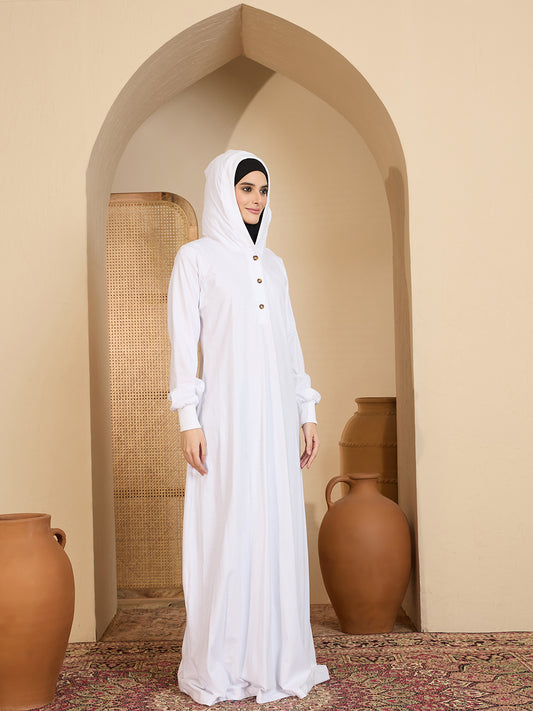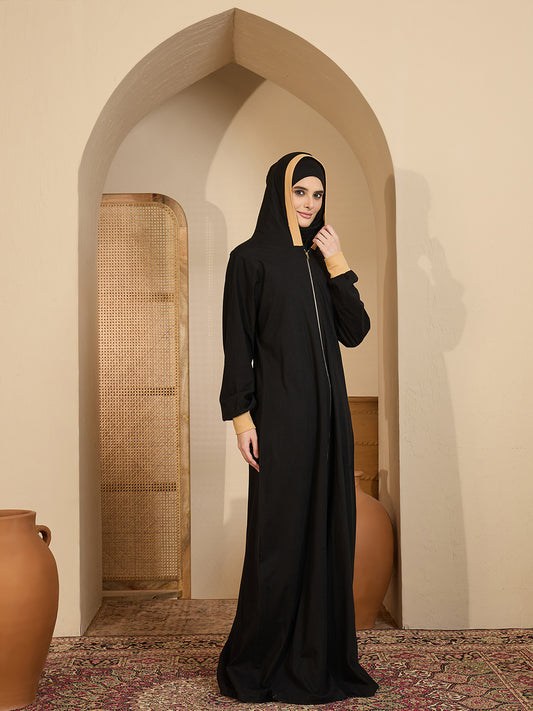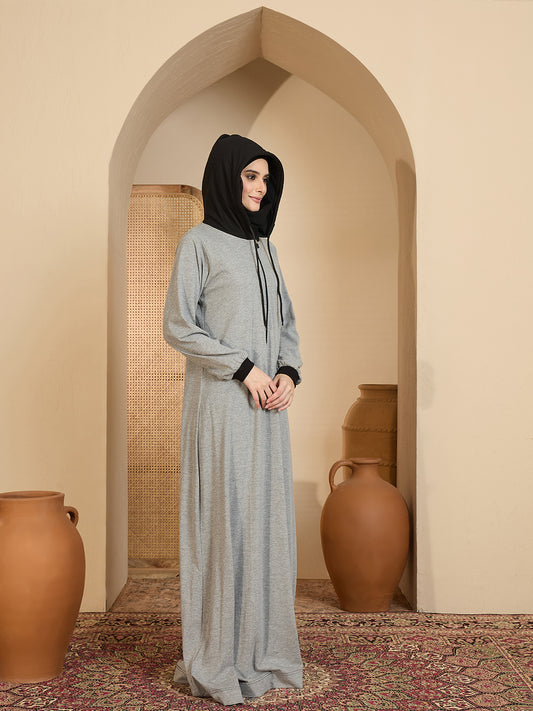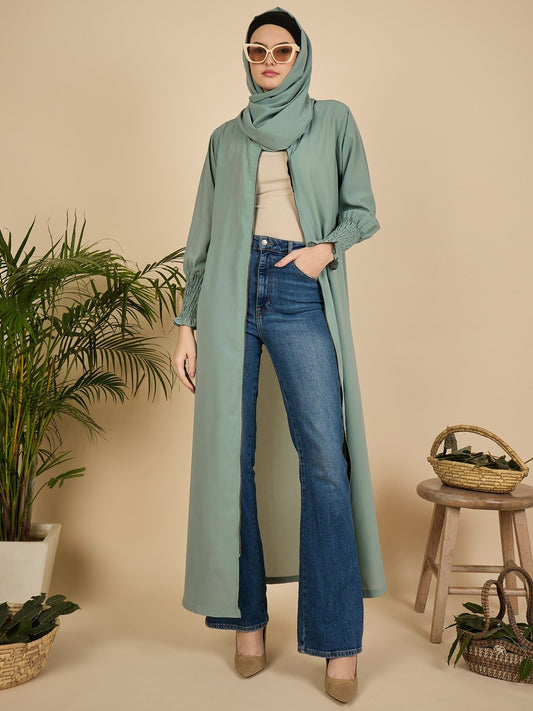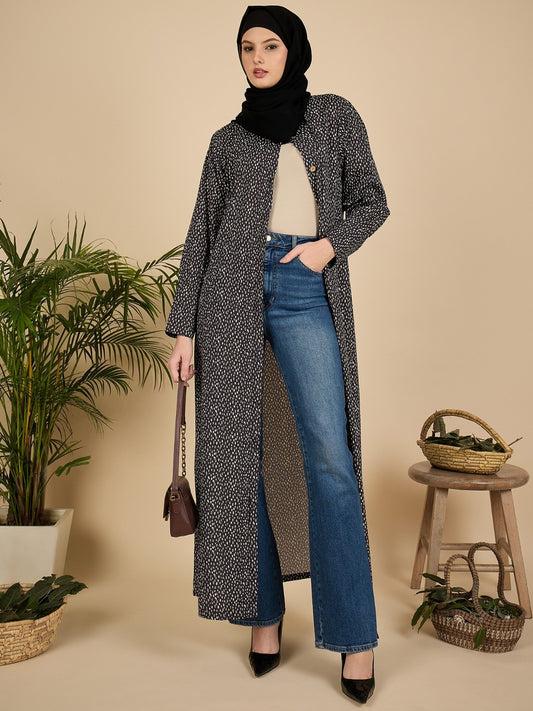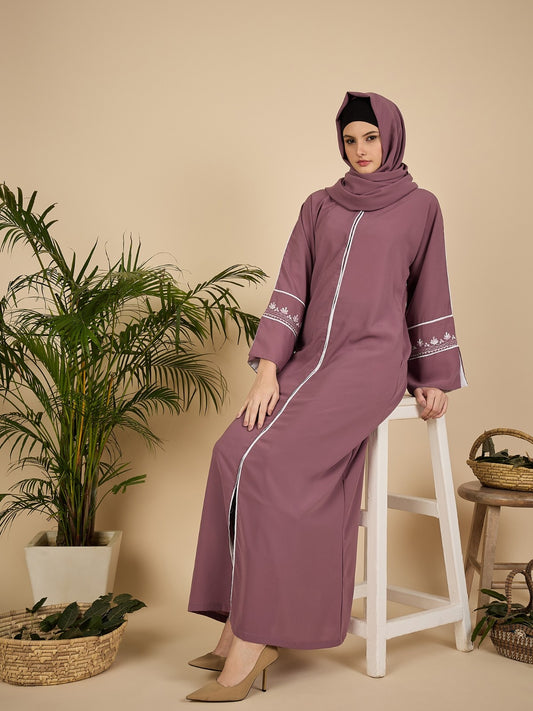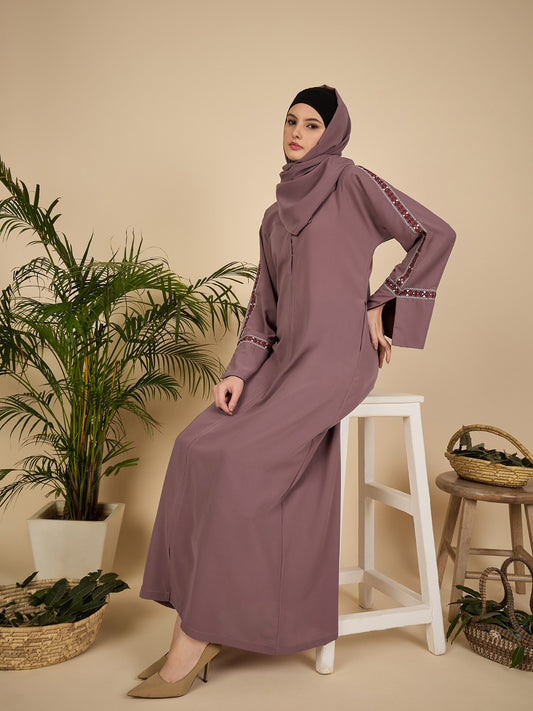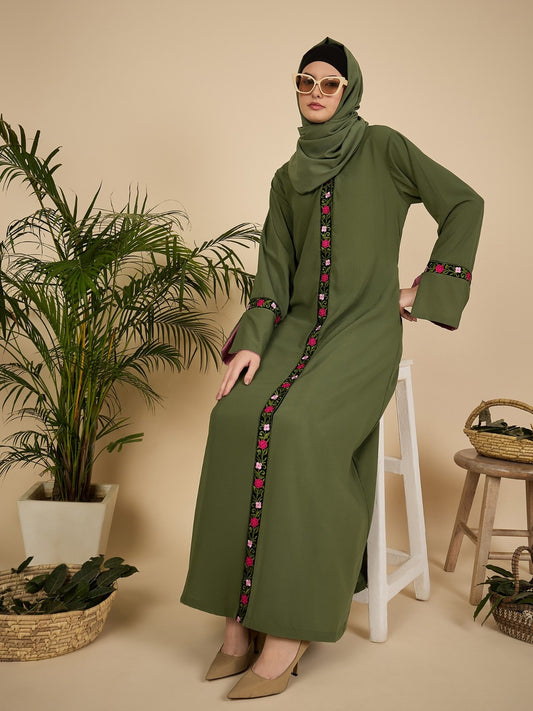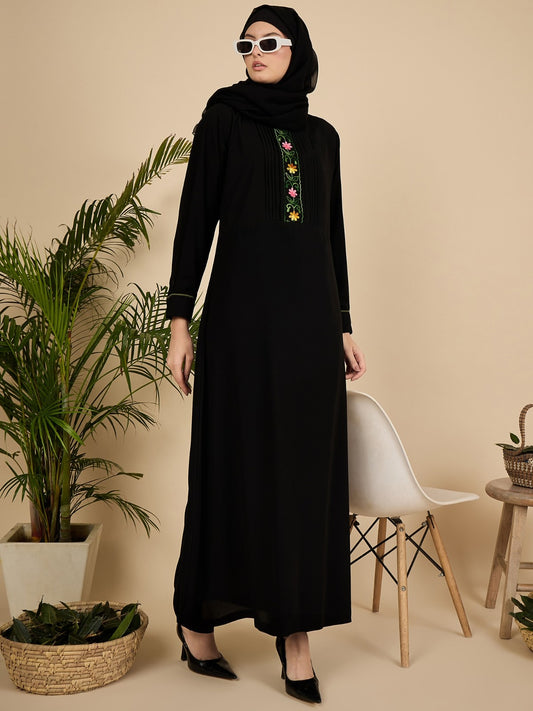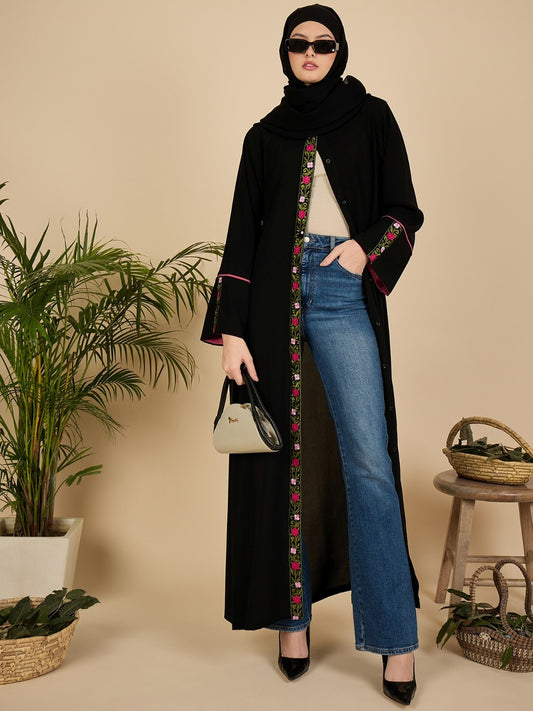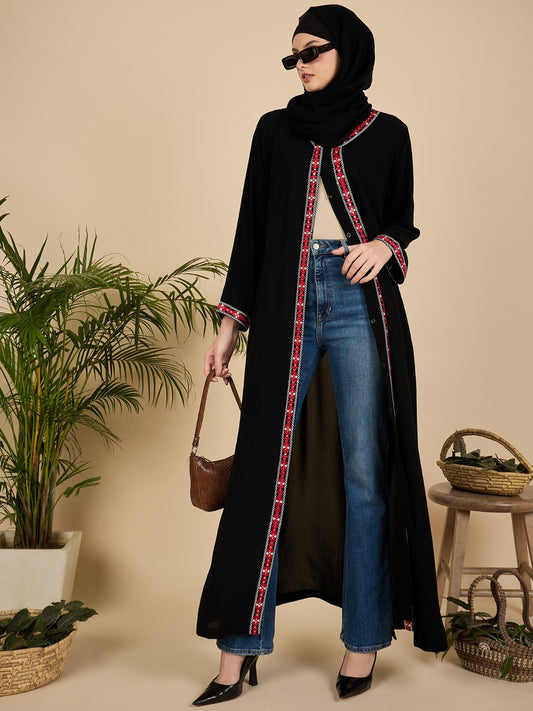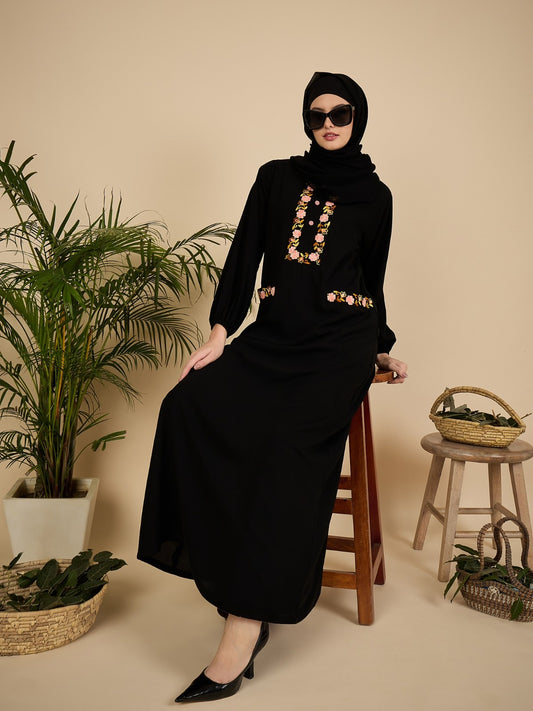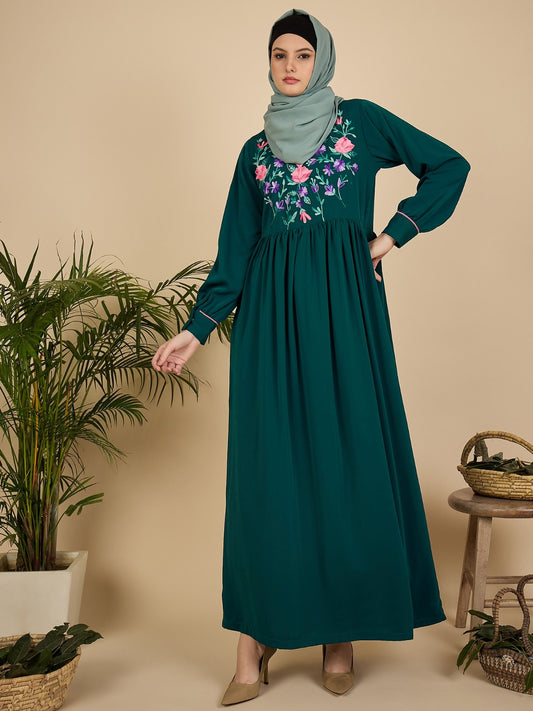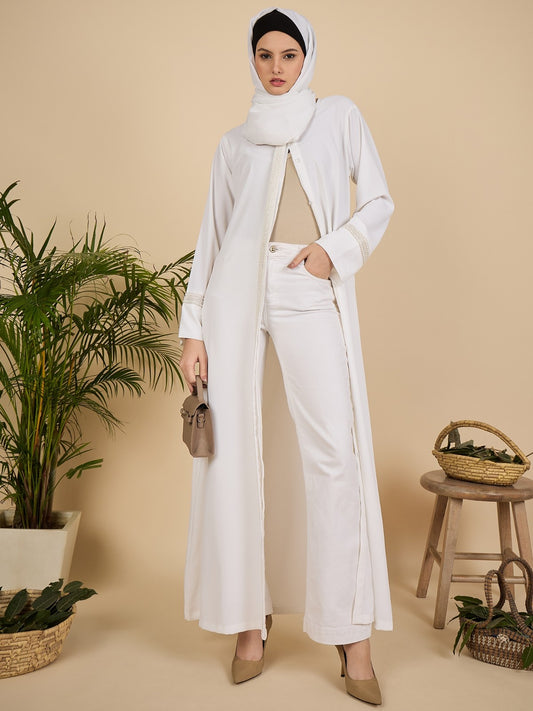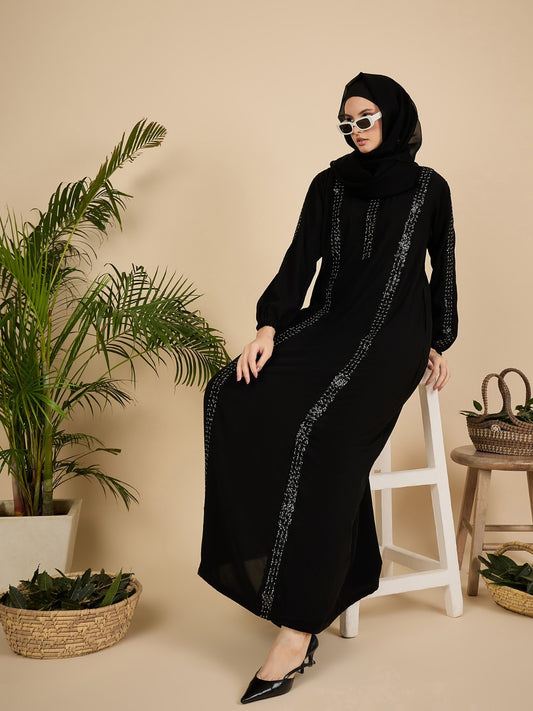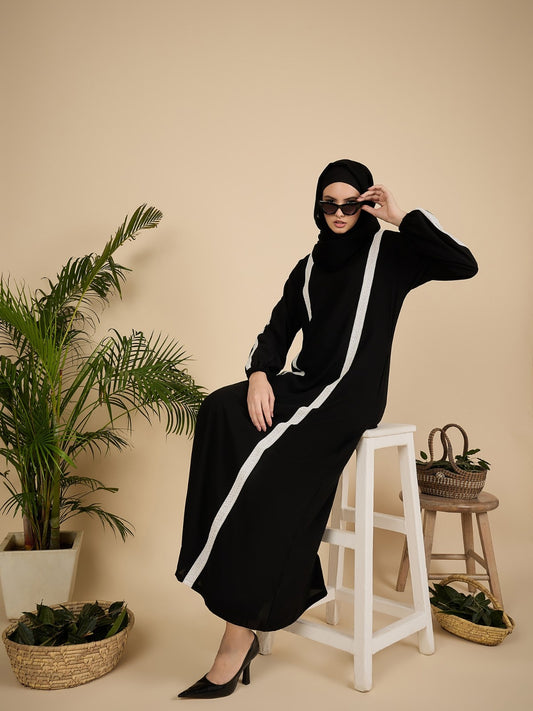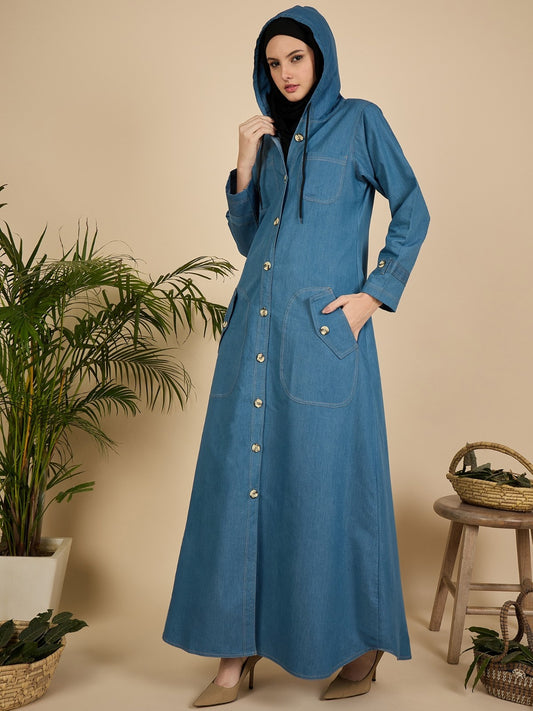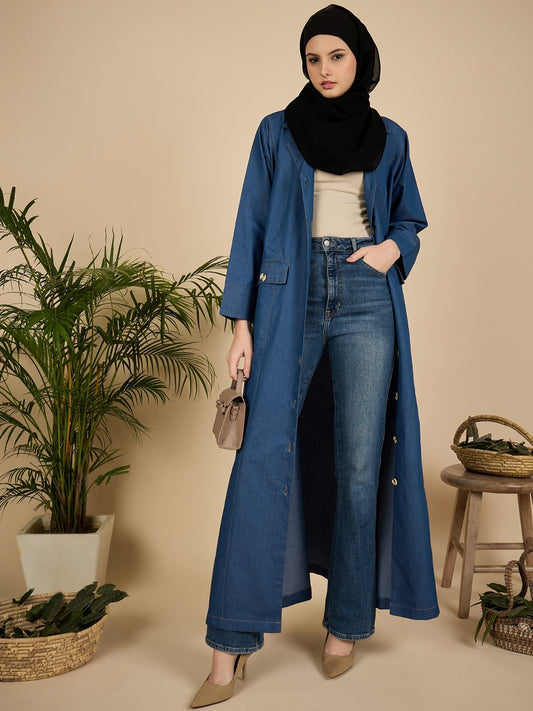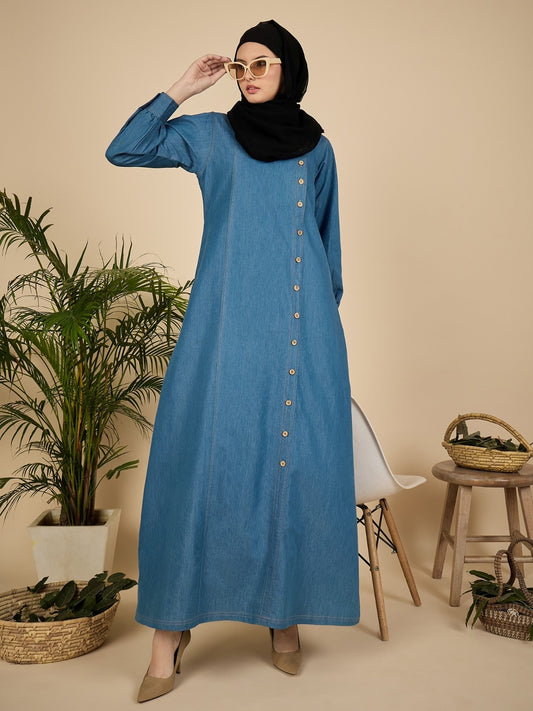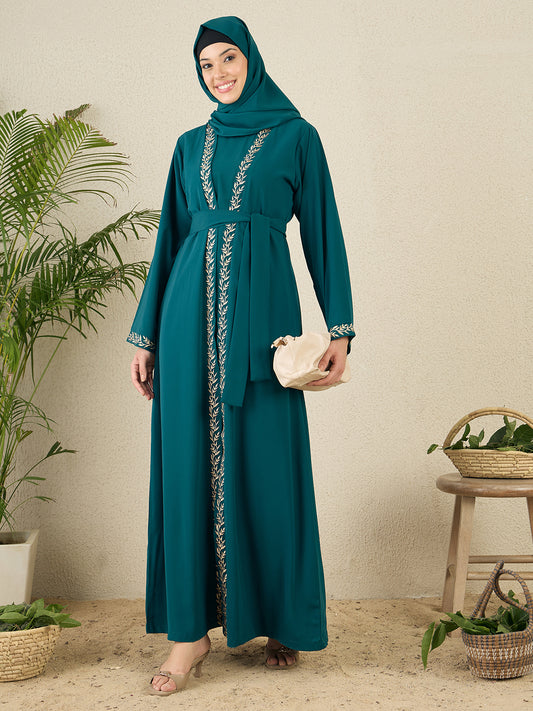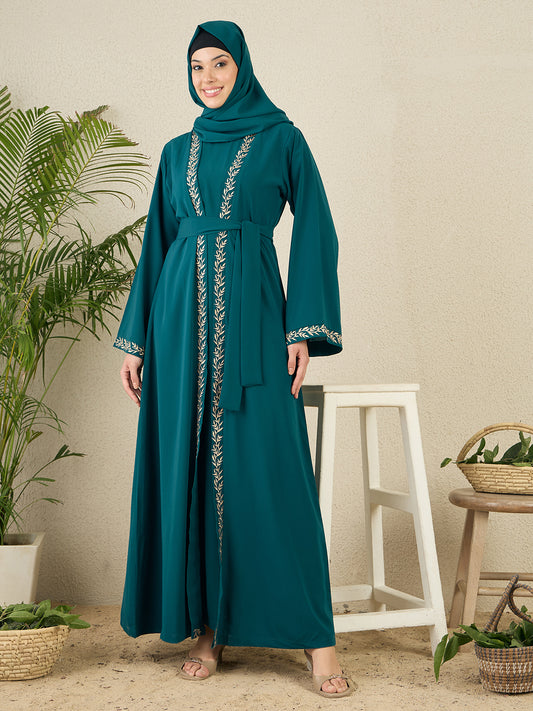Abaya Outfit
A beautiful robe-like garment with a gathered flow on every inch of its silhouette, adorned by the Muslim ladies, is none other than the poised abaya. It is in fact not just a garment but a statement of identity and faith. A woman in an abaya is a reflection of strength, grace, and inner beauty. However, even at this date, not everyone has had the opportunity to appreciate the fashionable and stylish aspects of an abaya. For this very reason, at Nabia, we take an initiative to correct the aforementioned myth about abayas. Each abaya dress of ours serves as a reminder that modesty and style can coexist harmoniously.
Modern Abaya Dress : Style & Diversity
The novel generation has embraced the abaya, infusing it with creativity and innovation while respecting its cultural significance. A notable characteristic of our stylish abaya collections lies in the extensive variety of styles, fabrics, and decorative elements it offers. Although classic black abayas remain popular, we have diversified the palette, offering a range of colours and a broad spectrum of fabrics to cater to diverse preferences. An assortment of embellishments have become a staple of abaya design, adding a touch of glamour and luxury to this classic garment. These details allow women to express their individual style while adhering to the principles of modesty.
Abaya Muslim Dress: An Essence
The impact of abayas has reached well beyond the borders of the Arab world. Recognition of the appeal of abayas has caused its influx in people’s collections. Muslim women all around the world started finding their strength, their style and their identity in a solitary abaya muslim dress. This is progressing towards creating a global fashion phenomenon. Hailing from different backgrounds, many fashion influencers and celebrities have also embraced abayas, presenting their distinct takes of this garment on social media and prestigious events. Their support has not only manifested the abaya's spotlight, but also underscored the idea that modest fashion can be both chic and sophisticated.
Buy Abaya Online & Explore the Range
The evolution of abayas from a functional piece of clothing into a symbol of cultural identity, fashion and modesty is extremely alluring. This allurement continues in the abaya online shopping at Nabia, where you will find the exciting variety and gripping versatility of an abaya. Our collection ranges all the way from front open abaya, to solid abaya, printed abaya, shrug abaya, embroided abaya, jilbab abaya and tunic abaya. One of the reasons behind their enduring popularity is their remarkable versatility and variety. It suits a wide range of occasions, from informal gatherings to upscale events, making it a staple in the wardrobes of countless muslim women. Opting for a casual daytime appearance? A simple solid abaya, matched with flats or sandals, will offer comfort and style. Conversely, for special occasions, an embroided abaya can serve as a statement piece. They are also quite suitable for all the seasons. During summers, lightweight abayas offer ideal comfort, while in winters, warmer materials or layering using a shrug abaya can be a cosy option.
Whether worn for religious, personal or fashionable reasons, buy abaya online at Nabia and witness how it stands as a source of empowerment and self-expression for muslim women. Abaya is a testament to the idea that fashion can be a reflection of one's inner beauty and values, making it an enduring and beloved garment for generations to come. So, the next time you slip into your abaya, remember that you are not just wearing a piece of clothing, but are embodying an enduring tradition of grace and modesty.

